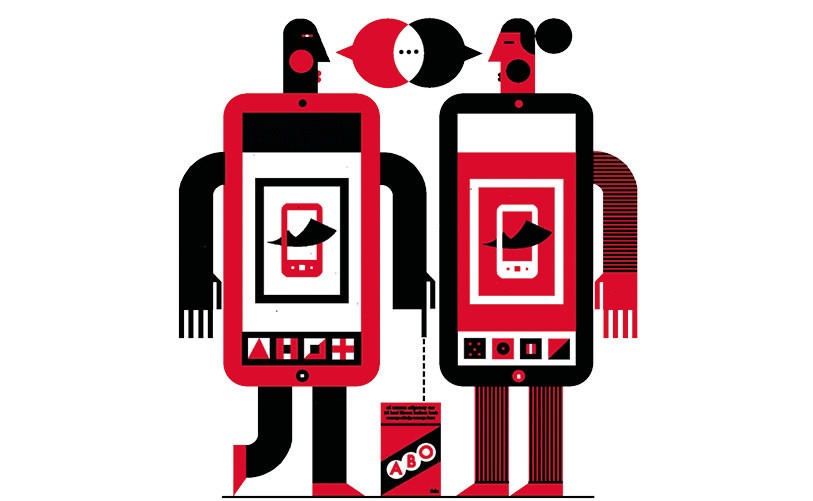
Will this future make for a better life?
Africa is ahead of the digital curve: The M-Pesa electronic payment system has revolutionized daily life for people in Kenya and is a beacon for the rest of the world.
Anja Bengelstorff (copy) & Matthias Ziegler (photo), Raymond Biesinger (illustration)
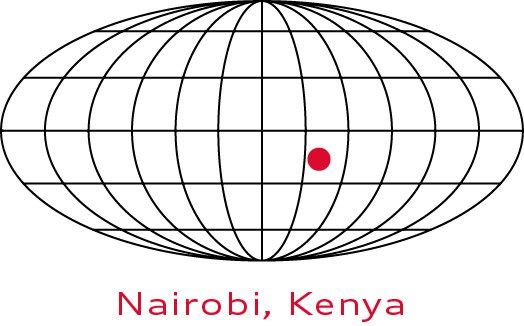
Bonface Nyagah has finally secured a seat in the minibus taxi when he remembers his empty wallet. As always, it’s jammed into his right back pocket and as always it’s as flat as his twelve-year-old son’s exercise book. His identity and health insurance chip cards are right where they belong, but there isn’t a single banknote, let alone any coins. The 38-year-old watches the conductor collecting fares from the other passengers. When at last it’s Bonface’s turn to pay up, the conductor holds out his hand filled with coins in a gesture of habitual boredom. Bonface looks at him and asks, “M-Pesa?” Wordlessly, the conductor digs out an ancient phone with a scratched screen and starts dictating his phone number. Nyagah in turn reaches for his back pocket. The two men sit facing each other, tapping at their phones. A confirmation text comes through on Nyagah’s phone first, before also registering on the conductor’s. Satisfied, he tucks the device away before waving his handful of coins under the nose of the next passenger. Bonface Nyagah has paid his fare. The process took all of 30 seconds.
Situated at the edge of Kenya’s capital, Nairobi, John Maingi’s States Barbershop and Lounge also bears the unmistakable whiff of progress. Here, hair that apparently has a will of its own is transformed into art, beards are trimmed and pedicures performed on weary feet while customers sit on regal white armchairs, drink in hand, nibbling cookies. With a golden bus for a facade, the shop is decorated inside with luxurious touches, representing John Maingi’s idea of American life. Despite at least four more barbers who ply their trade within a 100-meter radius, the 28-year-old tourism manager felt sure that no customer would be able to resist this place. And people certainly came, but they demanded something Maingi hadn’t reckoned on: payment via M-Pesa. Just like Bonface Nyagah, they were no longer accustomed to carrying cash. Which is why today a green sign hangs on the wall next to Maingi’s reception counter, bearing the number 842646. This service, which Kenyans already regard as the norm, is still considered revolutionary in the rest of the world. Businesses accept cashless payments transferred between phones via mobile network operator Safaricom’s M-Pesa service. The “m” is for mobile and “pesa” means money in Kiswahili, the country’s other lingua franca besides English. Thanks to M-Pesa, customers can arrive at Maingi’s barbershop in the city’s Umoja district without paper currency or coins and still leave with freshly cut hair. Since virtually no business, restaurant or retailer can afford to do without the money transfer service, they all have a six-digit M-Pesa business number prominently displayed—a popular spot being directly next to a portrait of the president—in white on a green background.
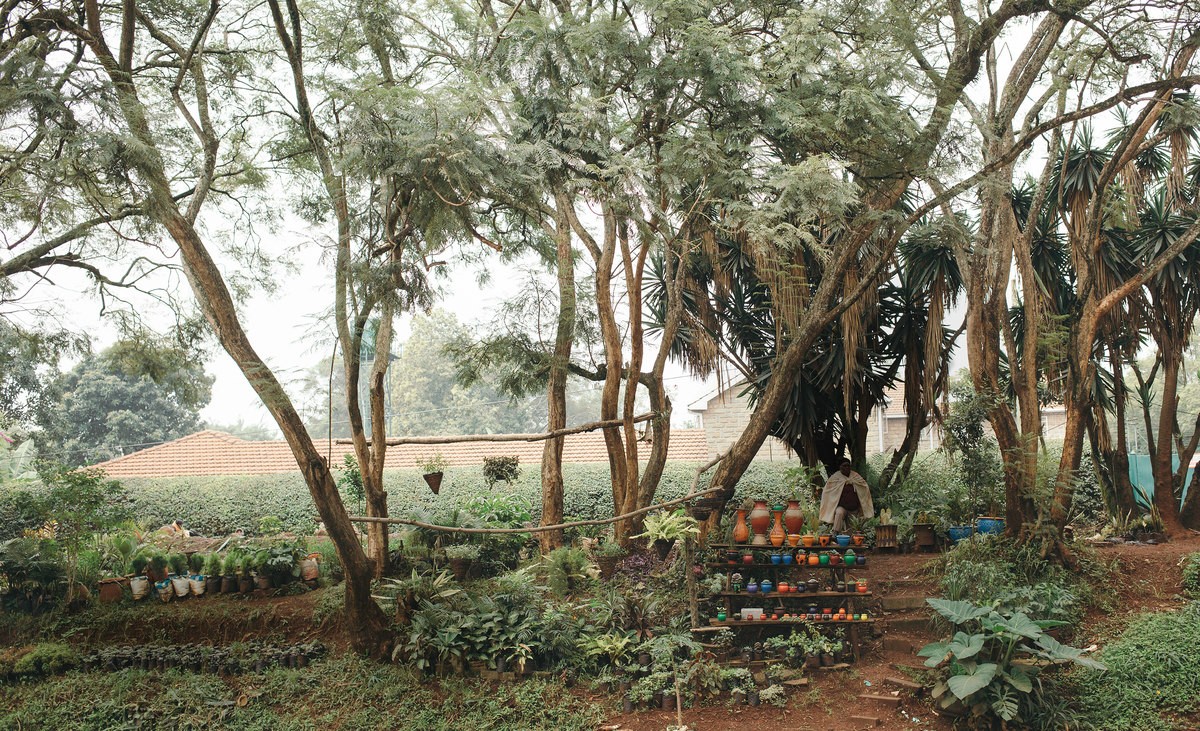
Digitalization is a young phenomenon. In 2015, there were 226 million Africans between the ages of 15 and 24. By 2055, that number could more than double. The average age of Africans is 19, while for Europeans it’s 42.6.2 3
It all started because of people’s relatives living in the countryside. Up until eleven years ago, the national currency, Kenyan shillings, moved from place to place in bulging pants pockets, battered suitcases or metal boxes whose padlocks provided the fragile illusion of security. It passed between freshly washed and manicured hands or those covered in the sweat and callouses of hard labor. Shillings traveled for hours or days in buses very much worse for wear on bumpy, underdeveloped country roads and past deserted hub stations. Under such stressful traveling conditions, the cash was easily lost, forgotten, damaged or stolen. As in most of sub-Saharan Africa, the majority of the Kenyan population live and work as farmers in rural areas. The youth are drawn to educational and employment opportunities in the cities that feature conveniences such as electricity, running water and bank accounts, which are a matter of course in Europe. To this day, few people in the villages enjoy any of these amenities. In order to financially support their parents in the countryside, children earning incomes in the cities often had to take risky and uncertain measures: handing over cash to a neighbor or bus driver who happened to be passing through the village. Alternatively, the funds had to be sent by postal money order, which could take weeks, frequently never arrived and was also only possible if the recipient had a post office box. And there weren’t many more people with those than with bank accounts.
But in 2007, several million Kenyans had a cell phone with a Safaricom number. Their phone number then became an account number; starting from March that year, Safaricom clients have been loading money onto their phones and sending it to others on the same network. Received within minutes, the funds can then be passed on to someone else or withdrawn as cash from an M-Pesa agent. To this day, transaction fees are based on the amount sent or withdrawn. The recipient pays the equivalent of 2.70 euros and the sender 0.90 euros to transfer roughly 580 euros—the maximum permissible transaction amount. The minimum fee is eight cents. Each individual transaction is confirmed by text message. Just as with a conventional bank, the service allows users to track all M-Pesa transactions. Two weeks after the launch, Safaricom—whose two major shareholders are UK cell phone carrier Vodafone, with a 40-percent investment, and the Kenyan government, with its 35-percent stake—had just under 20,000 active M-Pesa users. Seven months later, that figure had risen to one million. Today, there are more than 20 million registered customers who make use of the network of over 150,000 representatives in cities and the countryside to easily load, send and withdraw money. Often, these representatives own small businesses such as kiosks. Four out of five adult Kenyans use M-Pesa as a method of payment, while a mere 31 percent rely on banks. Although other cell phone providers have subsequently added electronic payment services to their portfolios, Safaricom still dominates the Kenyans market, with 70 percent of the users. As a result, competitors trail far behind with mobile money. Nevertheless, starting from April 2018, customers can send payments to other networks and even link their PayPal accounts to M-Pesa. Very few people in Kenya use credit cards.
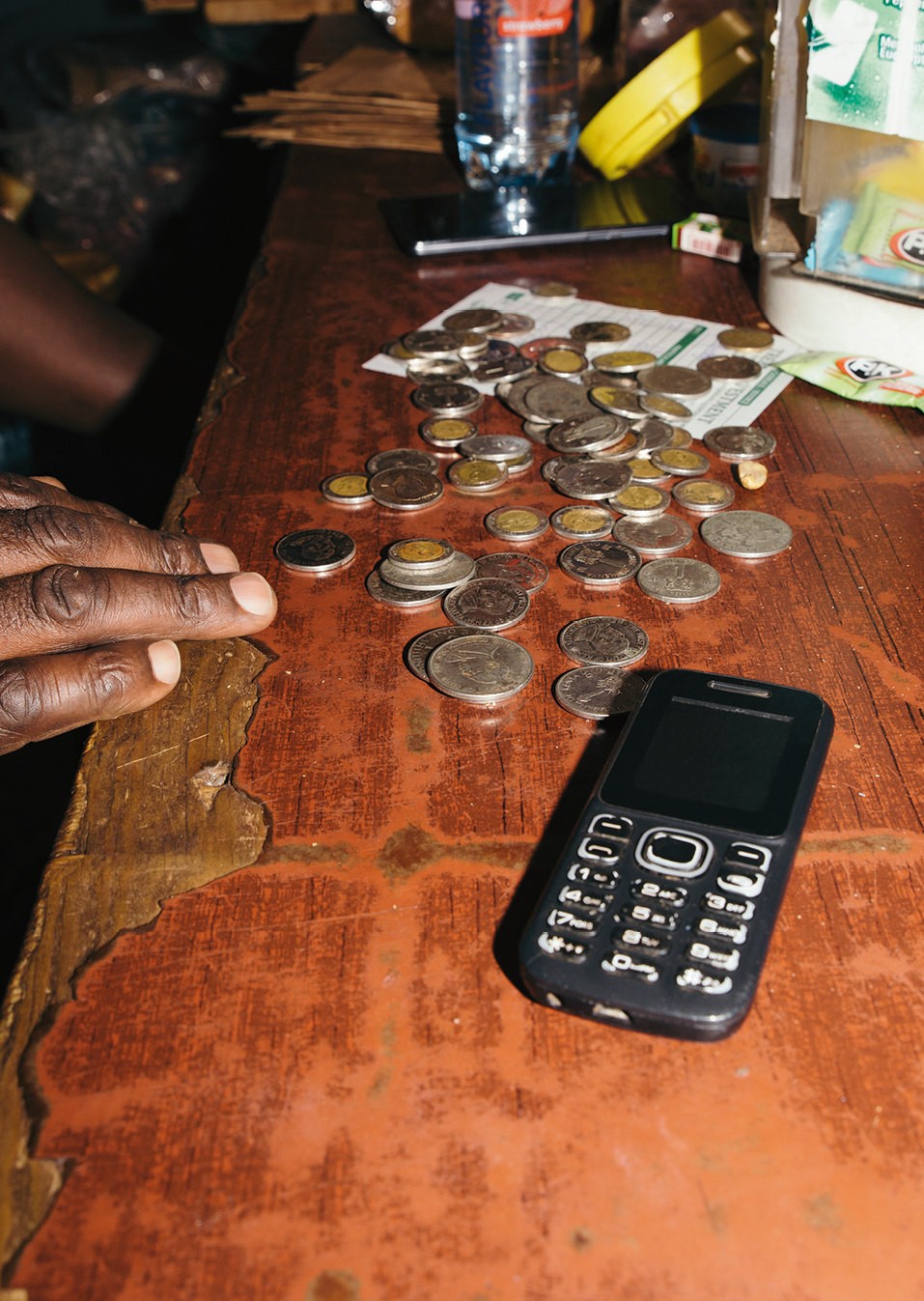
Pesa means money
in Kiswahili.
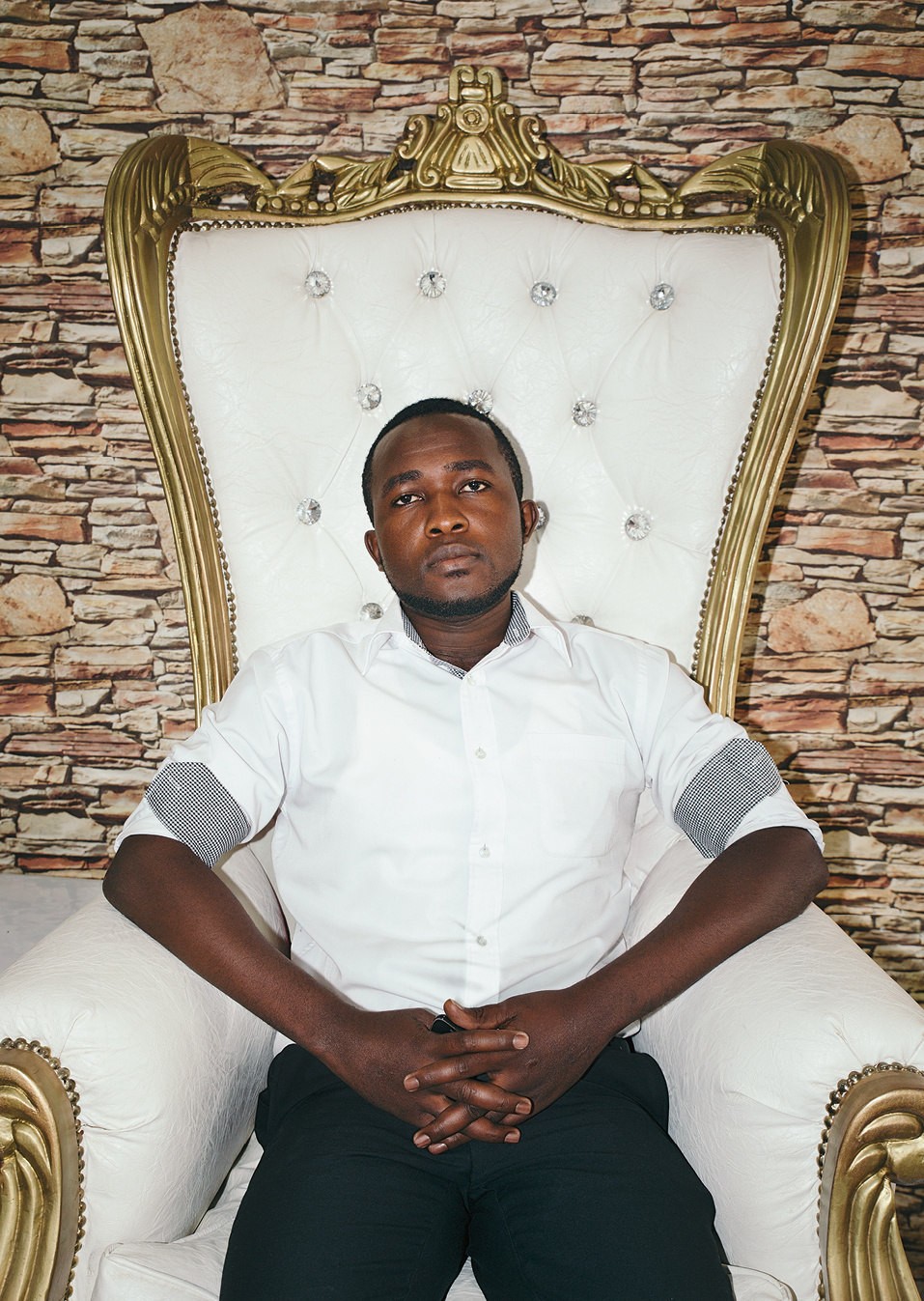
Back in 2006, M-Pesa was actually launched for a very different purpose than digital financial transactions. Originally, the platform was designed for the microfinance industry—facilitating the payment and repayment of loans. But the system’s potential to serve the public at large quickly became apparent. M-Pesa struck a chord: Whether they had a bank account or not, Kenyans now had the ability to make fast and secure money transfers at any time without worrying about opening hours or standing in lines. This catapulted the rural population outside the banking system from the agrarian age directly into today’s digital era. The fact that the young, urban middle and upper classes who have always been open to new technology were also quick to take the plunge into the M-Pesa adventure helped the service achieve its breakthrough. The service is ultimately not just a technological innovation but above all a social one.
Transferring money from one cell phone to another was just the start. It’s now also possible to pay water and electricity bills, withdraw money from ATMs, purchase plane tickets, prepay data and airtime, order concert tickets, pay for a taxi or haircut as well as take out small loans to buy a solar panel, for instance, so that you can have electricity in your home for the first time—which is just what 40-year-old Ntanin Kintalel, who is ethnically Maasai, did. Her family of four lives in a tiny Nairobi slum that has no garbage pick-up, water supply or sewer system. Tall, lightweight metal kerosene lamps served as a source of light. Not only does the lamps’ smoke cause coughing and make people’s eyes water, but the light is weak and the fuel, at 40 cents per day, quite expensive. Today, Kintalel’s modest tin shack is equipped with a solar panel which she paid off via M-Pesa over the period of a year at a rate of 40 cents per day, making the investment affordable for a household like hers. The family paid a deposit of just under 24 euros and a total price of roughly 170 euros. Since the solar panel was installed, everyday life has changed dramatically in Ntanin Kintalel’s home. “The children have more time and better light to do their homework,” she says. An allergy the youngest child suffered from also disappeared with the kerosene lamp. Ntanin, who earns a living selling elaborate and brightly colored Maasai jewelry, can now use the solar panel to charge her phone after work. “Before, I had to go to the nearest kiosk to do that. It was often dark, took ages and cost me about 16 cents to recharge each time.”
For a long time, the millions-strong metropolis of Nairobi advertised itself as a green city in the sun. But instead of affordable housing, luxury apartments are now being built, only to stand empty because they are too expensive. The construction boom is sweeping away avenues and green spaces. Today, Nairobi’s green stuff is of the Safaricom and M-Pesa variety. It springs up on billboards, signs, buses, T-shirts, house walls and kiosks. It even rubs off on people’s behavior: Parents settle their children’s school fees, tenants pay their rent in M-Pesa green.
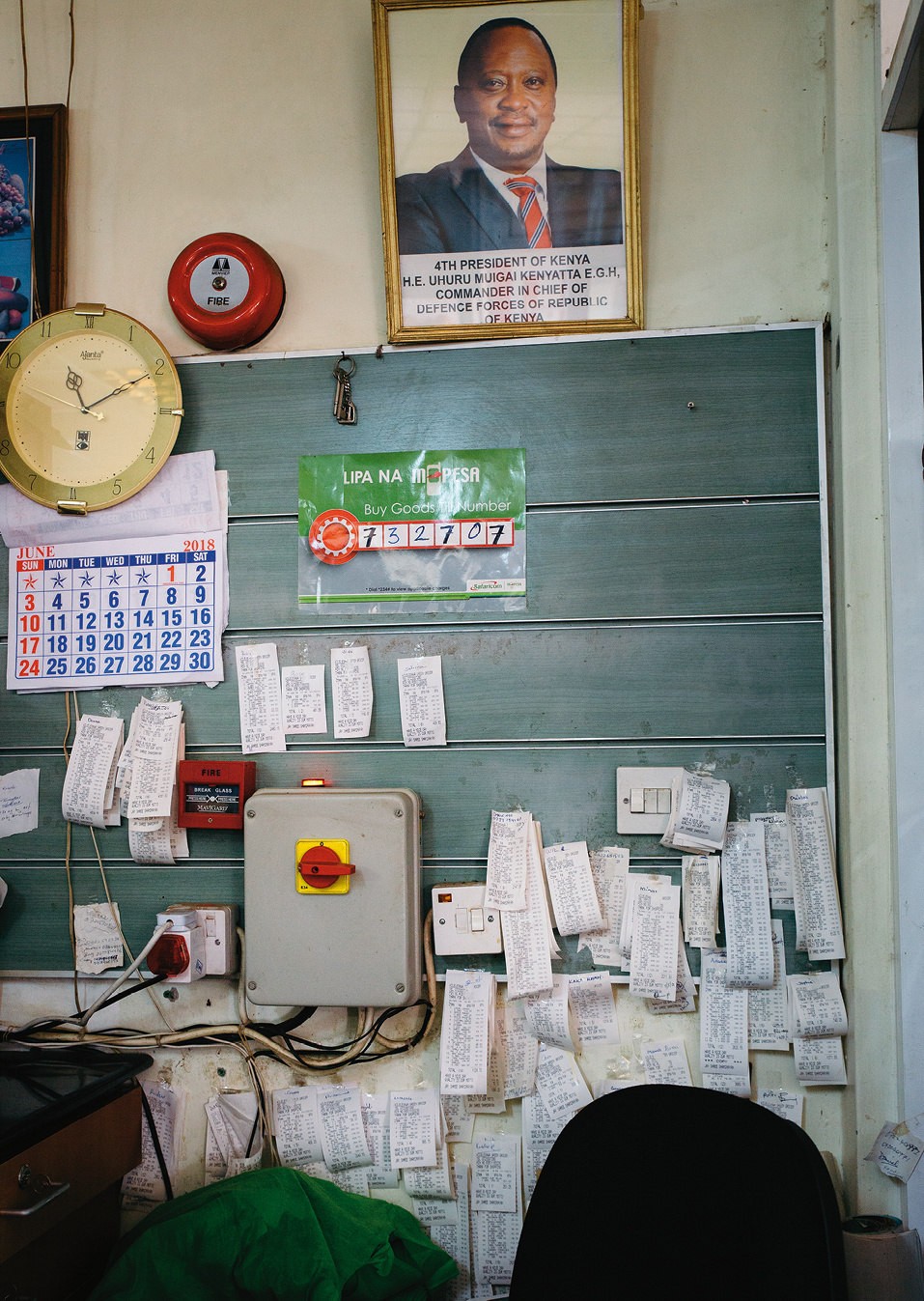
It takes two days to process an application for and approval of the six-digit M-Pesa number that businesses need to give customers the option of making cashless payment. Over 100,000 businesses in Kenya carry the green sign.

According to estimates, there were roughly 800,000 home solar systems installed in Africa at the end of 2016, which owners were able to pay for with mobile money.4

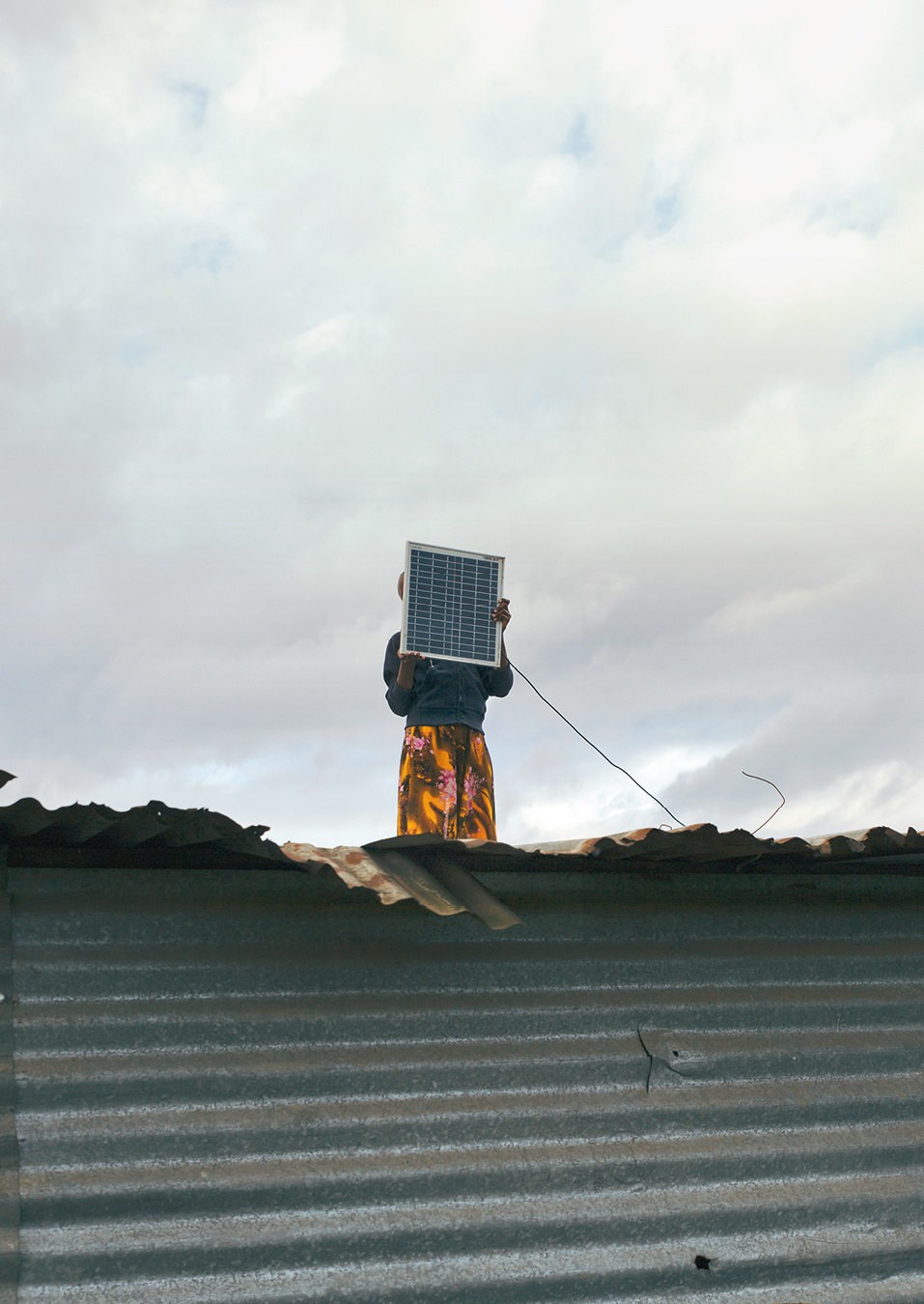
The solar panel on the roof of Ntanin Kintalel’s tin shack, which lies in a Nairobi slum. Using M-Pesa, the family paid off the unit within a year.

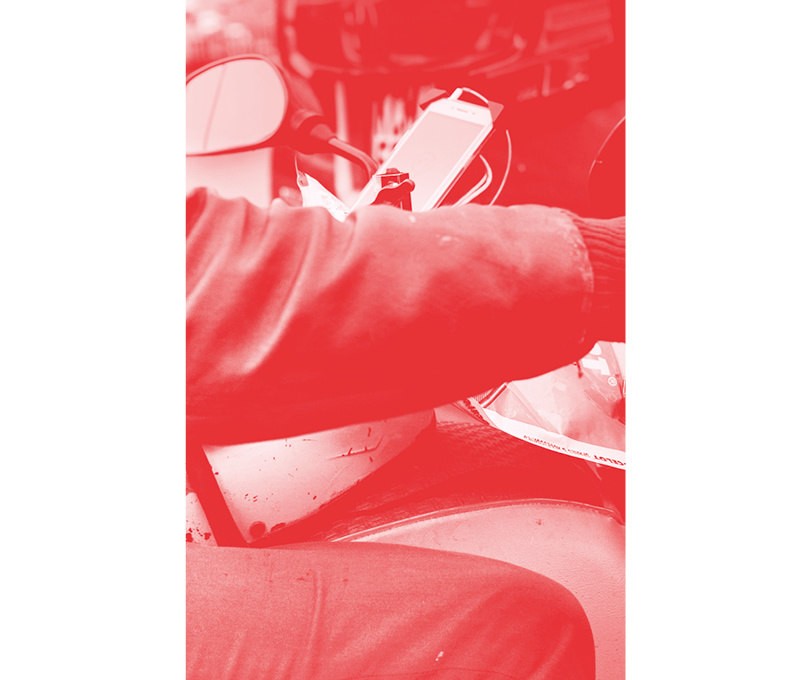
In other areas of digitalization, too, Africa is breaking new ground with innovations. In Tunisia, electricity grid users receive a text message encouraging them to save power when consumption is high. Diabetics in Uganda receive texted reminders to take their medication.
Bonface Nyagah—the man without bus fare—also buys groceries and gas with M-Pesa. “Once a week, I transfer money from my bank account, which my salary is paid into, to my M-Pesa account,” he says. He has also borrowed money through this channel, since the service offers microloans. “That way no one has to know when I’m hard up.” Retailers are increasingly accepting M-Pesa for online purchases. And many startups and small businesses in rural areas are only viable at all because of M-Pesa. Kennedy Wambua, a 25-year-old student who is fascinated by “innovative and revolutionary technologies,” as he labels them, imports new products from the U.S. and UK and sells them on his online platform. Without the opportunities M-Pesa has unlocked, he would never have even thought of doing such a thing. The payment system is embedded in the website: When a customer enters their telephone number on the page, an M-Pesa window pops up on their phone. It lists all the product information as well as the price and requests the M-Pesa pin code. “That’s totally awesome,” Wambua grins. The Bluetooth headphones around his neck look new. “With M-Pesa, customers trust businesspeople more,” he feels. “Each transaction is documented, so money no longer gets lost.”
He dreams that one day this might put an end to corruption, which is estimated to deplete the Kenyan state coffers by a third. “If a police officer stops me looking for a ‘little something,’ I always ask all innocently if I can send it by M-Pesa,” Kennedy Wambua explains. Everyone in Kenya knows that a “little something,” or “kito kidogo” in Kiswahili, is a request for a bribe. “Mentioning M-Pesa quickly puts an end to that and the officer lets me go on my way. No one wants to leave a trail of evidence.” The state, which has an ownership stake in Safaricom, has boarded the high-speed digital bandwagon: Kenyans can pay for 90 percent of all government services, such as the issuing of identity documents and certificates of criminal records, with mobile money. Though essentially a simple innovation, M-Pesa has turned the Kenyan economy upside down. In no time at all, it has fundamentally altered the way people communicate, think and live. Just as people around the world talk about “googling” a term rather than “looking it up on a search engine,” the phrase, “You can also M-Pesa me” is a new jewel in the national vocabulary. It’s a language that Baljit Virdi has fully mastered. The businessman has run a pharmacy in the Kileleshwa district for 20 years. The area is popular with the middle classes. Eight years ago, Virdi reserved a corner of his store for M-Pesa, where some 200 customers per day pay money into their accounts or withdraw funds. “Today, M-Pesa is simply everywhere,” he says. “Hardly anyone uses cash anymore.” He believes that the M-Pesa service has raised his pharmacy’s profile in the district. “A third of those who come for M-Pesa end up buying something.” His monthly commission depends on the number of transactions performed. “On average, I earn about 1,000 euros from it.”

Maasai Ntanin Kintalel, 40, and her youngest daughter Lydia in their living room, which is lit by solar power.
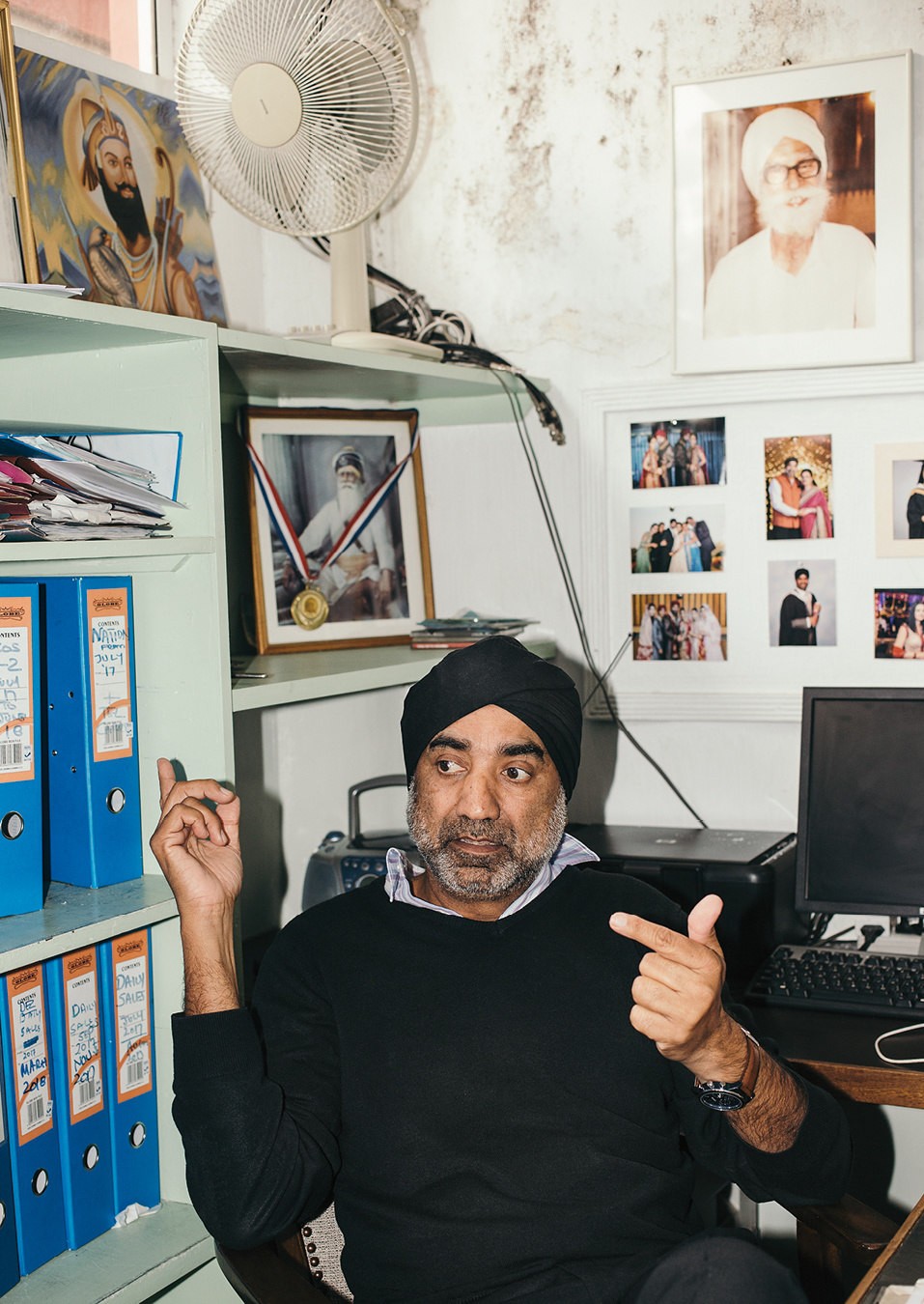
Owner of a pharmacy in the wealthy Kileleshwa district, Baljit Virdi sits in his office on the business’s premises.
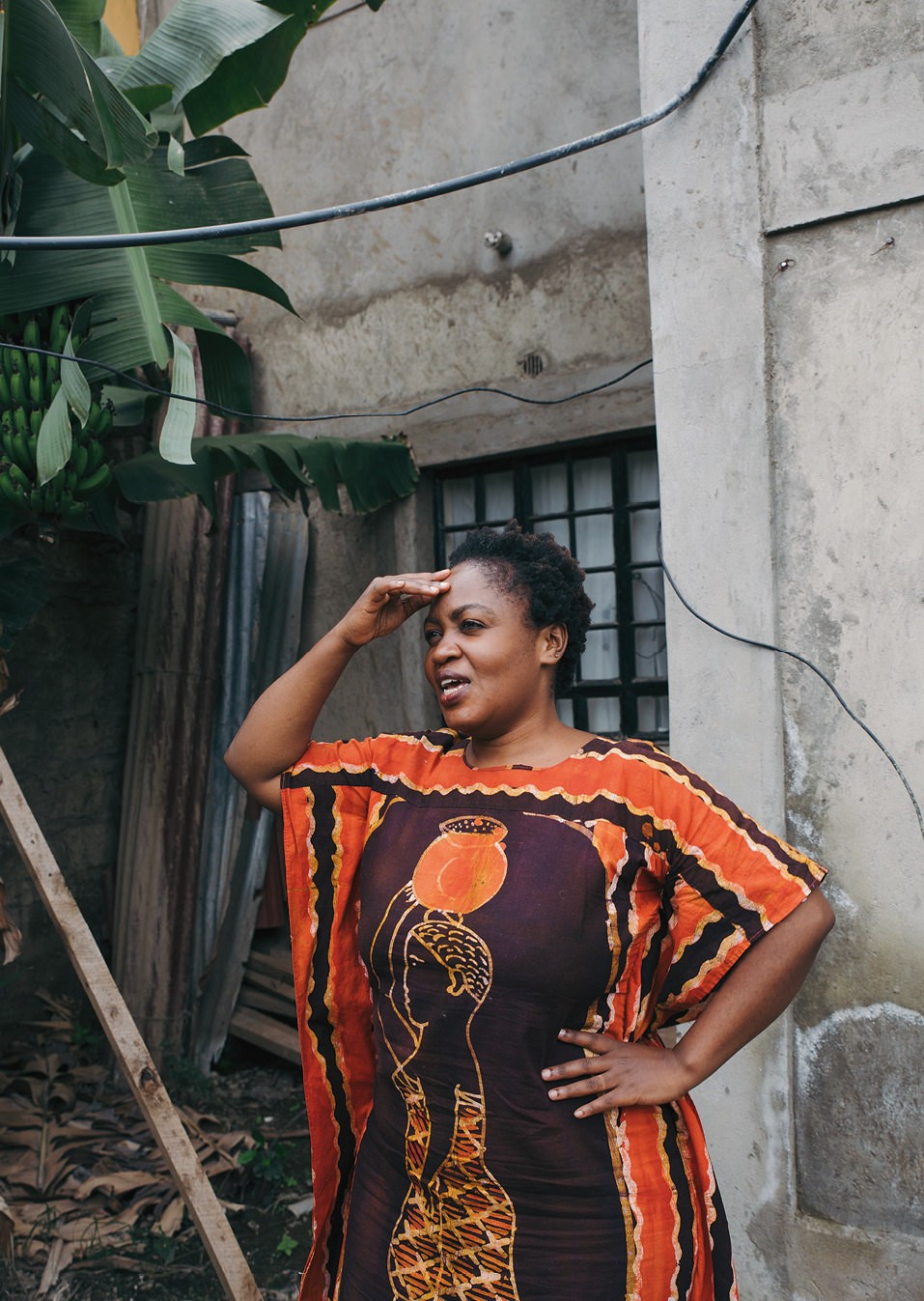
Lawaridhi Namayi in front of her house on the edge of Nairobi. She and her husband have been working to build their own home for years.
Between October and December 2017, Safaricom recorded 493 million M-Pesa transactions valued at 11.8 billion euros. Taking into account all providers offering such services throughout Kenya, 14.7 billion euros were moved in the same period. It’s worth bearing in mind that each M-Pesa user can move a maximum of 1,170 euros per day and hold at most 840 euros in their M-Pesa account. According to the parent company’s own figures for the financial year ending in March 2018, M-Pesa generated 525 million euros, or 28 percent of the group’s total revenue. M-Pesa is now actively used in nine other countries outside Kenya. On the African continent, these include Tanzania, South Africa, Mozambique, Ghana, Lesotho, the Democratic Republic of Congo and Egypt; Romania and India also use it. Nowadays, no one in Kenya need travel for days to personally deliver money to someone else. Some, however see this as impacting social life. There are complaints that instead of visiting parents and delivering some cash, M-Pesa reduces family ties to a problem solved by throwing money at it.
Lawaridhi Namayi, 34, is a counter-example whom M-Pesa has introduced to new friends who help each other save. Her 49-inch flat-screen TV takes pride of place in a corner of her living room which, like the whole house, is still under construction. This is the home of a typical middle-class Kenyan family: Lawaridhi is mother to a two-and-a-half-year-old son and works freelance as a beautician. Her husband Neville is head of news at a private TV station. Through a Facebook group made up exclusively of women who exchange tips on home decorating, Lawaridhi banded together with eleven women from her neighborhood. Every month, each of the women transfers 25 euros via M-Pesa to Lawaridhi, who is the group administrator. Over the period of a year—which is why there are twelve women—each member is entitled to the 300 euros saved in one particular, predetermined month. When it was Lawaridhi’s turn, she treated herself to the TV that she had had her eye on for so long. She beams and says, “Saving 25 euros each month is much easier than trying to scrape together 300 euros all in one go.” The women, however, never meet in person. Only five even showed up for the “launch” at Lawaridhi Namayi’s home. They support each other virtually, explains Lawaridhi, sharing experiences in raising children or difficulties with the in-laws. But the focus is on saving. As Lawaridhi Namayi explains, “M-Pesa helps us pool our money. The service has made my life so much easier.”
Sources: 1 visa.de (retrieved July 1st, 2018) | 2 africa.undp.org (retrieved July 1st, 2018) | 3 worldometers.info (retrieved July 1st, 2018) | 4 gsma.com (retrieved July 1st, 2018)

